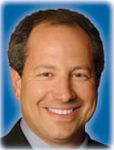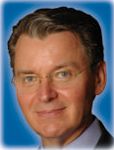Article
Urologists should balance investments using Modern Portfolio Theory
Significant time is spent developing methods or strategies that come close to that "perfect investment." None is as popular or compelling as Modern Portfolio Theory.


While the perfect investment would have the attributes of high growth with little or no risk, the reality, of course, is quite different. Not surprisingly, significant time is spent developing methods or strategies that come close to that "perfect investment." None is as popular or compelling as Modern Portfolio Theory (MPT).
Recognition for the achievement was delayed for several decades because, although developed in the early 1950s, the task of applying MPT was only made possible by the use of modern computers that could handle the vast number of calculations and range of historical data that are required by the model. Portfolio management today combines theory and technology in order to optimize portfolio performance.
For most investors, the "risk" they take in an investment is that the return will be lower than expected. In other words, it is the deviation from the average return. For each investment, the MPT model calculates a "standard deviation" from the mean that the model calls "risk." Through diversification, the "risk" of one investment may offset the "risk" of another.
The key to the MPT model is the plotting of an "Efficient Frontier" of the varying combinations of investments in a portfolio that provides the maximum return and lowest risk. For every point along the Efficient Frontier, the MPT model displays the combination of investments that produces the optimal level of return and risk based on past performance of the various investment markets. While the past is not always a predictor of the future, MPT uses this data to estimate various risk/return scenarios.
The key today to the utilization of MPT is understanding that a variety of asset classes provides diversification and quantifies the risk and reward of any given portfolio. Examples of major asset classes include large U.S. companies, small U.S. companies, international companies, domestic bonds, international bonds, and real estate. Understanding the various asset classes and their respective indices leads to the construction of a portfolio that can still encompass the historical validity of MPT.
Funding the various asset classes can be easily accomplished through mutual funds or exchange traded funds that mirror a specific index or asset class. Even after years of bull and bear markets and the development of new investment vehicles, MPT continues to play a crucial and meaningful role in investment management strategy.
Q There is a lot of talk about interest rates increasing. If that happens, will bonds lose value?
A It is generally true that in times of increasing interest, bonds lose value. This is due to the inherent nature of "market risk" as it relates to bonds. As interest rates rise, the value of an existing bond decreases because it pays a fixed rate of interest that would be lower than what is being offered in the market. On the other hand, bond values appreciate when interest rates decline. The longer the maturity time frame, the more sensitive the bond is to interest rate changes.
Another risk is "credit risk," which rating agencies define as the ability of the issuer to pay back interest as well as principal. With a higher-risk bond, a greater amount of interest would be promised, as opposed to bonds with a high credit rating, which pay a lower amount of interest to their investors. Beyond credit and market risk, there is also the risk that the issuer will "call" the bond prior to maturity at a pre-stated value. This typically happens as interest rates fall, and the issuer can refinance or offer new bonds at a lower rate.
Joel M. Blau, CFP, is president and Ronald J. Paprocki, JD, CFP, CHBC, is chief executive officer of MEDIQUS Asset Advisors, Inc. in Chicago. They can be reached at 800-883-8555 or blau@mediqus.com
or paprocki@mediqus.com
.





